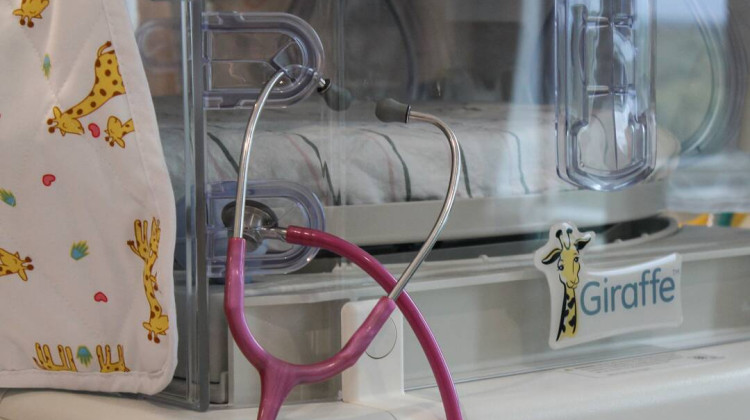
Researchers from the Indiana Hemophilia & Thrombosis Center (IHTC) and Northwestern University say a genetic mutation in some Old Order Amish living in Indiana protects them against aging
Courtesy Ian Lamont/IN 30 MINUTES Guides/CC-BY-2.0By EMMA ATKINSON
Researchers from the Indiana Hemophilia & Thrombosis Center (IHTC) and Northwestern University say a genetic mutation in some Old Order Amish living in Indiana protects them against aging.
Their research shows a population of at least 70 genetically-isolated Amish individuals from Berne, Ind. live on average 10 years longer than their peers and families. The longer lifespan is thanks to a single-gene mutation which causes them to have very low levels of plasminogen activator inhibitor-1, also called PAI-1.
Dr. Amy Shapiro, the founder and CEO of the Indiana Hemophilia & Thrombosis Center, says this discovery has been a long time coming.
In 1990, Shapiro heard about a young Amish girl who was experiencing severe bleeding after bumping her head as a toddler. The girl’s condition had gone undiagnosed for seven years, and Shapiro took interest.
“So, I thought because she was from the Amish that it was likely that she had some rare recessive disorder,” she says.
Because the Amish often marry within their existing families, Shapiro says certain recessive disorders are common.
Shapiro decided to test the girl for PAI-1 deficiency and found it was the cause of the severe bleeding.
For the girl to have been born with PAI-1 deficiency, both of her parents had to have a single copy of the mutated gene. Both parents passed down each of their single mutated genes, resulting in the girl receiving two mutated genes instead of just one.
Shapiro, in conjunction with genetic counselors at IHTC, set out to find the origin of the gene and to determine which Amish families were at risk of passing the gene on to their children.
“So, over the course of the last 27 years, we have found 12 people in the community with this bleeding disorder,” she says.
Shapiro says her team then wondered if carriers of the condition – people with only one copy of the gene – might actually benefit from their low, but not absent levels of PAI-1.
“And we wondered, well, since they might have lowered PAI-1, maybe their risk of cardiovascular disease was better than the normal population,” she says.
Shapiro worked with the chair of the Northwestern University Department of Medicine to conduct a large study of 177 Amish in Berne in 2015.
Scientists working with Northwestern found that Amish with two copies of the gene not only had an excessive bleeding disorder, but also presented with symptoms of cardiac fibrosis.
Shapiro says their 27-year research process isn’t over yet. She says she hopes to conduct more research with the help of the Amish to study how PAI-1 relates to cognitive function, exercise and other factors.
 DONATE
DONATE










 Support WFYI. We can't do it without you.
Support WFYI. We can't do it without you.